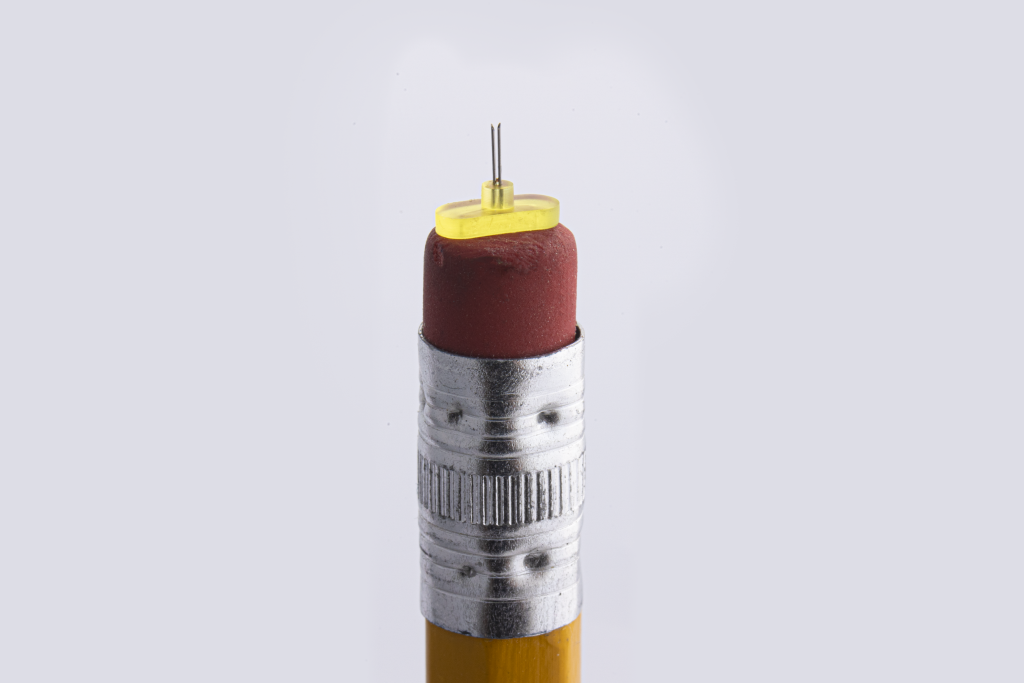US-based 3D printer manufacturer Boston Micro Fabrication (BMF) has launched the microArch D1025, a new 3D printer for the production of micro-scale parts that require high precision and repeatability. This is the first offering in a new line of high-fidelity BMF 3D printing products.
Leveraging the company’s patented Projection Micro Stereolithography (PμSL) technology, the microArch D1025 can produce parts at resolutions of 10μm or 25μm. The system also offers a hybrid mode, where both resolutions can be combined into a single layer or switched between layers.
What’s more, BMF’s new 3D printer features built-in automation for improved efficiency, reportedly enabling cost and time savings. Given its versatility and high resolution, the microArch D1025 is targeted towards research, healthcare, electronics, life sciences, and photonics applications.
According to John Kawola, CEO-Global at BMF, this new 3D printer has been designed to meet the increasing market demand for high-precision micro-scale production.
“Increasingly, we have been pushed by our customers to bring our technology to applications where higher precision and tighter tolerances would result in an overall increase in quality and performance, regardless of part size,” explained Kawola. “The launch of the microArch D1025 continues our commitment to answer this call, combining the advances of the microArch S350 25μm platform with the high-resolution capability of our 10-micron printer into one powerful, flexible solution for our customers.”

microArch D1025: BMF’s new high-precision 3D printer
Since launching its first 3D printer in 2016, BMF has built a sizable additive manufacturing portfolio, supporting over 2000 global customers to produce high-precision parts.
Central to the company’s products, including the new microArch D1025, is its proprietary PμSL technology. Last year, Kawola spoke to 3D Printing Industry to provide insights into BMF’s micro-3D printing technology, as well as the company’s business model.
PμSL is a DLP-based 3D printing process that leverages a UV-LED light source, a high-quality movement platform, and controlled processing technology to fabricate high-resolution parts.
Kawola calls this technology “top-down DLP,” with a DLP projector placed above a resin vat. The process uses flashes of UV light and custom optics to rapidly photopolymerize layers of liquid polymer at a micro-scale.
Unlike other processes, PμSL moves the vat rather than the DLP engine, resulting in high quality and accuracy, even at the edges of the 3D print area. This technology enables high-resolution microstructures to be produced at a scale 100 times smaller than a human hair.
According to the company, the microArch D1025’s 25μm resolution mode is ideal for the production of parts that don’t require ultra-high resolution. On the other hand, the 10μm mode supports smaller, more complex features.
The ability to combine these two resolutions into a single 3D print job is said to enable greater flexibility and efficiency. The systems can also automatically switch between resolutions within and between layers to optimize the 3D printing process. Larger DLP projection zones have also been incorporated for both resolutions, enabling faster 3D printing speeds while ensuring high levels of precision.
Additional automation features include an automatic calibration system and resin adjustment, minimizing downtime and allowing users to start 3D print jobs sooner and increase throughput.
3D printer settings for roller frequency and resin leveling delay times are also automatically set according to the printing area and resin viscosity. This functionality is available in the microArch D1025’s automatic mode, with users also able to manually control these settings if greater control is required.
The microArch D1025 was unveiled earlier this month in Shanghai at the 2024 edition of TCT Asia. BMF will showcase this new 3D printer at the upcoming TCT 3Sixty 2024 and Rapid + TCT 2024 trade shows.

Technical specifications of the microArch D1025
| 3D Printing Technology | Projection Micro Stereolithography (PμSL) |
| Light Source | UV-LED |
| Light Wavelength | 405nm |
| 3D Printing Material | Photosensitive resins |
| Input Data File Format | STL |
| XY Optical Resolution | 10µm and 25µm |
| XY Position Accuracy | ±1μm |
| 3D Print Size | 100 × 100 × 50 mm |
| Layer Thickness | 10~50μm |
| Tolerance | +/- 25µm ~ +/- 50µm |
| Power Supply | 2kW |
| 3D Printer Dimensions | 1350 x 900 x 1950 mm |
| 3D Printer Weight | 500kg |
| Voltage | 110-220V |
| Certification | CE |
Want to help select the winners of the 2024 3D Printing Industry Awards? Join the Expert Committee today.
What does the future of 3D printing hold?
What near-term 3D printing trends have been highlighted by industry experts?
Subscribe to the 3D Printing Industry newsletter to keep up to date with the latest 3D printing news.
You can also follow us on Twitter, like our Facebook page, and subscribe to the 3D Printing Industry Youtube channel to access more exclusive content.
Featured image shows the new BMF microArch D1025. Image via Boston Micro Fabrication.

